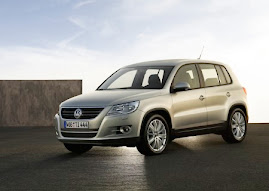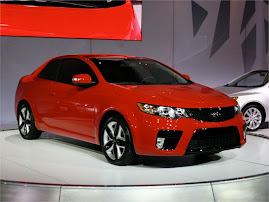Whether you drive a two-seat hybrid or a three-ton SUV, chances are you can squeeze a bit more distance out of each gallon of fuel -- and at today's gas prices, an improvement of just one or two miles per gallon (MPG) can really add up. These ten fuel saving tips have served me well over the years, and they can help you improve your car's fuel economy and take some of the sting out of high fuel prices. Most of these tips will give you a very slight increase in MPG -- but use several together and the gas mileage improvements will really add up.
1. Slow down -One of the best ways to save gas is to simply reduce your speed. As speed increases, fuel economy decreases exponentially. If you one of the "ten-over on the freeway" set, try driving the speed limit for a few days. You'll save a lot of fuel and your journey won't take much longer. (Just be sure you keep to the right, so you won't impede the less-enlightened.)
2. Check your tire pressure - Under-inflated tires are one of the most commonly ignored causes of crummy MPG. Tires lose air due to time (about 1 psi per month) and temperature (1 psi for every 10 degree drop); under-inflated tires have more rolling resistance, which means you need to burn more gas to keep your car moving. Buy a reliable tire gauge and check your tires at least once a month. Be sure to check them when they are cold, since driving the car warms up the tires along with the air inside them, which increases pressure and gives a falsely high reading. Use the inflation pressures shown in the owner's manual or on the data plate in the driver's door jamb.
3. Check your air filter - A dirty air filter restricts the flow of air into the engine, which harms performance and economy. Air filters are easy to check and change; remove the filter and hold it up to the sun. If you can't see light coming through it, you need a new one. Consider a K&N or similar "permanent" filter which is cleaned rather than changed; they are much less restrictive than throw-away paper filters, plus they're better for the environment.
4. Accelerate with care - Jack-rabbit starts are an obvious fuel-waster -- but that doesn't mean you should crawl away from every light. If you drive an automatic, accelerate moderately so the transmission can shift up into the higher gears. Stick-shifters should shift early to keep the revs down, but don't lug the engine -- downshift if you need to accelerate. Keep an eye well down the road for potential slowdowns. If you accelerate to speed then have to brake right away, that's wasted fuel.
5. Hang with the trucks - Ever notice how, in bad traffic jams, cars seem to constantly speed up and slow down, while trucks tend to roll along at the same leisurely pace? A constant speed keeps shifting to a minimum -- important to those who have to wrangle with those ten-speed truck transmissions -- but it also aids economy, as it takes much more fuel to get a vehicle moving than it does to keep it moving. Rolling with the big rigs saves fuel (and aggravation).
6. Get back to nature - Consider shutting off the air conditioner, opening the windows and enjoying the breeze. It may be a tad warmer, but at lower speeds you'll save fuel. That said, at higher speeds the A/C may be more efficient than the wind resistance from open windows and sunroof. If I'm going someplace where arriving sweaty and smelly could be a problem, I bring an extra shirt and leave early so I'll have time for a quick change.
7. Back off the bling - New wheels and tires may look cool, and they can certainly improve handling. But if they are wider than the stock tires, chances are they'll create more rolling resistance and decrease fuel economy. If you upgrade your wheels and tires, keep the old ones. I have fancy sport rims and aggressive tires on my own car, but I keep the stock wheels with a good narrower-tread performance tire in the garage. For long road trips, the stock wheels give a smoother ride and better economy.
8. Clean out your car - If you're the type who takes a leisurely attitude towards car cleanliness -- and I definitely fall into that category -- periodically go through your car and see what can be tossed out or brought into the house. It doesn't take much to acquire an extra 40 or 50 lbs. of stuff, and the more weight your car has to lug around, the more fuel it burns.
9. Downsize - If you're shopping for a new car, it's time to re-evaluate how much car you really need. Smaller cars are inherently more fuel-efficient, and today's small cars are roomier than ever -- Worried about crash protection? The automakers are designing their small cars to survive crashes with bigger vehicles, and safety features like side-curtain airbags and electronic stability control are becoming commonplace in smaller cars.
10. Don't drive - Not a popular thing to say on a car site, I know, but the fact is that if you can avoid driving, you'll save gas. Take the train, carpool, and consolidate your shopping trips. Walking or biking is good for your wallet and your health. And before you get in your car, always ask yourself: "Is this trip really necessary?"
- About.com
Tuesday, June 3, 2008
Subscribe to:
Post Comments (Atom)













_(544x408).jpg)


No comments:
Post a Comment